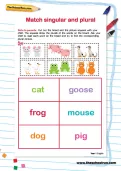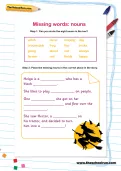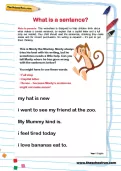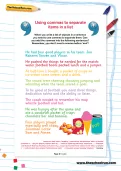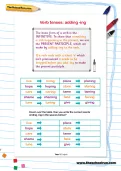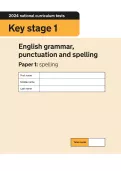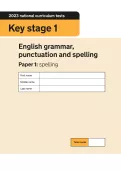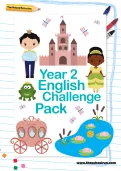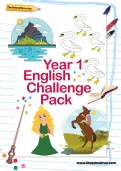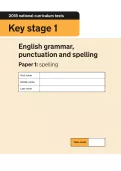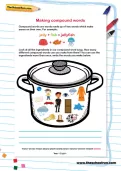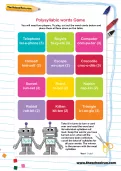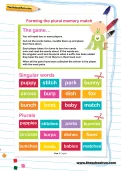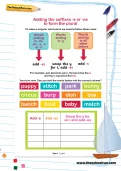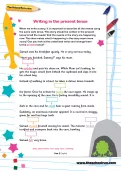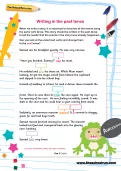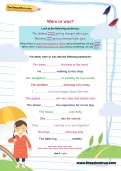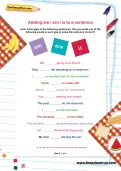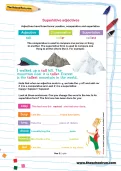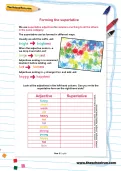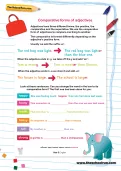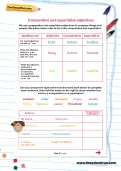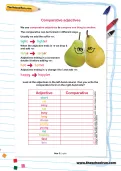Help your child prepare for the optional English KS1 SATs, taken at the end of Year 2, with some at-home practice. These complete Y2 SATs past papers from 2024 are the official Department for Education papers used in schools.
or
Register to add to your saved resources
Help your child prepare for the English KS1 SATs, taken at the end of Year 2, with some at-home practice. These complete Y2 SATs past papers from 2023 are the official Department for Education papers used in schools.
or
Register to add to your saved resources
Challenging reading comprehensions and activities for Year 2 readers and writers, designed to stretch your child and offer them the opportunity to explore their year-group topics in greater depth.
or
Register to add to your saved resources
Already a subscriber? to view this content.
Challenging reading comprehensions and activities for Year 1 readers and writers, designed to stretch your child and offer them the opportunity to explore their year-group topics in greater depth.
or
Register to add to your saved resources
Already a subscriber? to view this content.
Identify and underline all the imperative verbs in this instruction text about making an omelette – then make and eat one yourself!
or
Register to add to your saved resources
Help your child prepare for the English KS1 SATs, taken at the end of Year 2, with some at-home practice. These complete 2018 Y2 SATs past papers are the official papers from the Department for Education, used in schools.
or
Register to add to your saved resources
Look at all the ingredients in our compound word soup. How many different compound words can you make from them?
or
Register to add to your saved resources
Already a subscriber? to view this content.
A polysyllabic word is a word that has more than one syllable. Can you break these polysyllabic words down into syllables?
or
Register to add to your saved resources
Already a subscriber? to view this content.
To play, cut out the word cards and place them all face down on the table. Take it in turns to turn a card over and read the word and its individual syllables out loud. Keep the words you have turned over; when all the cards have been collected, count the total of syllables for all your words. The winner
is the person with the most syllables.
or
Register to add to your saved resources
Already a subscriber? to view this content.
Cut out the words below, muddle them up and place them face down. Each player takes it in turns to turn two cards over and read the words aloud. If the words are the singular word and its plural when a suffix has been added they keep the pair; if not they turn them back over. When all the pairs have been collected the winner is the player with the most pairs.
or
Register to add to your saved resources
Can you sort these singular words into the correct column to show how you'd form the plural?
or
Register to add to your saved resources
Already a subscriber? to view this content.
This story should be written in the present tense to tell the reader that the events in the story are happening now. Can you look at the underlined verbs and change them to the present tense?
or
Register to add to your saved resources
Already a subscriber? to view this content.
When we write a story, it is important to describe all the events using the same verb tense. This story should be written in the past tense to tell the reader that the events in the story have already happened. Can you look at the underlined verbs and change them to the past tense?
or
Register to add to your saved resources
When there is more than person or thing doing something, we say were. When there is just one person or thing doing something, we say was. Can you put either were or was into the following sentences?
or
Register to add to your saved resources
Look at the gaps in the following sentences. Can you write one of the following words in each gap to make the sentence correct?
or
Register to add to your saved resources
Already a subscriber? to view this content.
Adjectives have three forms: positive, comparative and superlative. The comparative is used to compare one person or thing to another. The superlative form is used to compare one thing to all the others like it. Look at these sentences. Can you change the word in the box to its superlative form?
or
Register to add to your saved resources
Already a subscriber? to view this content.
We use superlative adjectives to compare one thing to all the others in the same category. Look at the adjectives in the left-hand column. Can you write the superlative form on the right-hand side?
or
Register to add to your saved resources
Already a subscriber? to view this content.
Adjectives have three different forms: the positive, the comparative and the superlative. We use the comparative form of adjectives to to compare one thing to another. The comparative is formed differently depending on the adjective’s positive form. Look at these sentences. Can you change the word in the box to its comparative form?
or
Register to add to your saved resources
Already a subscriber? to view this content.
We use comparative and superlative adjectives to compare things and people. Can you choose the right word from the word bank to complete each sentence, then tick the boxes on the right to show whether this word is a comparative or a superlative?
or
Register to add to your saved resources
Already a subscriber? to view this content.
We use comparative adjectives to compare one thing to another. Look at the adjectives in the left-hand column. Can you write the comparative form on the right-hand side?
or
Register to add to your saved resources
Already a subscriber? to view this content.
